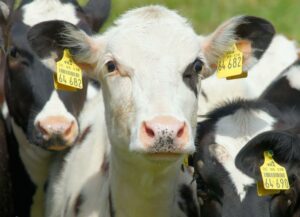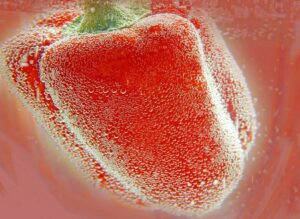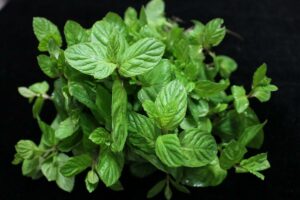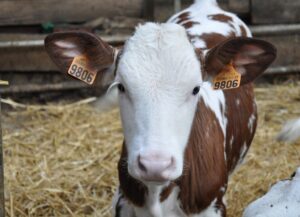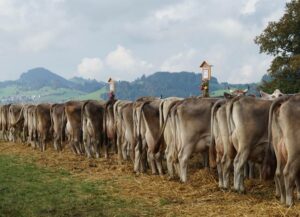Maria Villagrasa & Fernando Diaz
Nettle as anti-inflammatory and diuretic, fenugreek as appetite stimulant, Saint Mary’s thistle to protect the liver… The beneficial effects of these plants have been known for hundreds of years and are used in medicine to treat and prevent disease. But could they have the same positive effects on health and production performance of dairy cows?
Phytochemicals, also known as phytobiotics or phytogenic compounds, are bioactive compounds, such as essential oils, tannins and flavonoids, found in plants. Its beneficial effects are attributed to their antimicrobial and antioxidant properties and in recent years they have been used as natural growth promoters in the ruminant, swine, and poultry industries.
It has been observed that the inclusion of phytochemicals in diets stabilizes the gut microbiota and reduces toxic metabolites in the gut, thus improving productivity. They also improve overall health by reducing oxidative stress and increasing antioxidant activity in various tissues. Furthermore, they have immunomodulatory effects.
Considering the high incidence of “production diseases” in dairy cows linked to metabolism, musculoskeletal system, fertility and health of udder, the use of phytochemical-rich plants deserves more serious consideration as a preventative and therapeutic option.
A team of researchers (Walkenhorst M., et al., 2020) designed a two-stage farm trial to test the effects of a multi-herb feed additive on dairy cow’s health, fertility and milk production.
The additive (AD) contained: 27 species of plants belonging to 10 families; different parts of plants (herbs and leaves, flowers, seeds, bark and roots) and a wide range of phytochemicals. More than 50% consisted of Foeniculum vulgare (fennel), Pimpinella anisum (anise), Silybum marianum (Saint Mary’s thistle), Trigonella foenum-graecum (fenugreek) and Urtica dioica (nettle). It contained a mixture of 90 g of herbs and 10 g of feedstuffs (wheat bran and soybean oil) per 100 g with a “green meal” produced from a multiannual mixture of grass and clover used as placebo.
In the first experiment (E1) 62 cows were divided into three groups:
- AD-100: only received additive
- AD-50: 50% additive and 50% placebo
- Placebo (PL): only received green flour
Each cow received 100 g of AD-100, AD-50 or PL per day, respectively, from 14 days before scheduled calving until day 300 of the lactation or, in case of shorter lactations, until the end of it.
In the second experiment (E2) 280 cows were divided into two groups and received the AD-100 or PL diets. To improve the poor acceptance of the pure AD by some cows, feed additives were used such as wheat bran (80 g), corn meal (80 g), molasses (25 g), brewer’s yeast (10 g), and sugar (5 g) to 100 g of AD-100 or 100 g PL. Thus, the cows received 300 g of the respective food on the same days as in the previous experiment.
The composition of the additive compared to the placebo (% dry matter, DM) was protein 13.0 vs. 14.1; neutral detergent fiber 26.9 vs. 31.0; acid detergent fiber 30.4 vs. 26.6; ash 11.3 vs. 10.6. The main volatile compounds of the additive were eucalyptol, camphor, estragol and anatol. The total concentration of tannins (% DM) in AD-100 was 50% higher than PL (1.25 vs. 0.8).
Milk production and composition
Milk production, fat and protein contents, and urea did not differ between treatments in any of the experiments. The parameters were practically identical among the treatment groups, both in E1 (milk production 28.4 kg/day; fat 3.90%; protein 3.26%; urea 22.6 mg/l) and E2 (milk production 27.1 kg/day; fat 4.10%; protein 3.30%; urea 19.0 mg/l).
Body condition, energy metabolism and lameness
Body condition score is an important indicator of fat mobilization and therefore energy metabolism and risk of ketosis in cows. While diets rich in tannins and other phytochemicals such as essential oils may have a positive effect on body weight and condition, no effect of the additive on these parameters was observed in this study.
Ketone bodies in blood or milk are also good indicators of fat mobilization and risk of ketosis. A significantly smaller number of milk samples with elevated acetone levels (above or equal to 10 mg/l) were observed in AD-50 and AD-100 compared to PL in E1. In E2, no differences were observed between additive and placebo with respect to acetone.
In E1 the lameness in the AD-50 group was significantly lower than in the PL group (2% and 14% respectively).
Udder health and fertility
Milk samples was analyzed with SCC above or equal to 100,000/ml from the first to the eighth day of testing. In both experiments, the AD-100 group showed fewer results with high SCC than the PL group (E1: 40% with AD-100 and 55% with PL; E2: 38% with AD-100 and 55% with PL).
During E2 fewer cows were slaughtered for udder health reasons in the AD-100 group compared to the PL group. This result matches the best overall udder health situation in the AD-100 group compared to PL.
Regarding fertility, no significant differences in the inter calving period for E1 cows (371 days with AD-100; 371 days with AD-50; 385 days with PL; n =10, 11 and 15 observations, respectively) were observed. The intervals between births in E2 (385 days with AD-100; 400 days with PL; n = 82 for each treatment) were slightly higher than for E1. In both experiments, the inter calving period in the AD-100 group was approximately two weeks shorter than in the PL group.
In general, a high culling rate was observed among treatment groups in E1 (43% with AD-100; 45% with AD-50; 35% with PL) although without significant differences. The average culling rate was much lower in E2 although it also did not significantly vary between treatment groups (19% with AD-100; 26% with PL).
These results show that adding 100 g of an additive composed of different herbs improved udder health and reduced milk acetone as well as the inter calving period and culling rates due to udder health. In none of the parameters evaluated the additive produced negative effects. The general effects observed were multifactorial given the composition of the additive and, therefore, its phytochemical complexity. However, these results support the beneficial effects of a phytochemical-rich diet for dairy cows.
Reference
Michael Walkenhorst, Florian Leiber, Ariane Maeschli, Alexandra N. Kapp, Anet Spengler‐Neff, Maria Teresa Faleschini, Eliane Garo, Matthias Hamburger, Olivier Potterat, Philipp Mayer, Sandra Graf‐Schiller, Anna Bieber. A multicomponent herbal feed additive improves somatic cell counts in dairy cows ‐ a two stage, multicentre, placebo‐controlled long‐term on‐farm trial. Journal of Animal Physiology and Animal Nutrition, Volume 104, Issue 2.
© 2020 Dairy Knowledge Center. All Rights Reserved.


